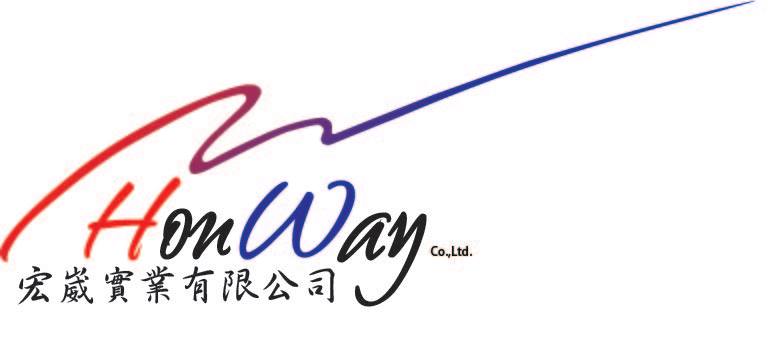Grinding is a high-precision manufacturing process widely used for surface treatment and dimensional control of metals, ceramics, and other materials.
The grinding process involves five major factors: mechanical equipment, grinding wheel, workpiece material, grinding fluid, and operating methods. Changes in any of these aspects can affect machining quality and production efficiency.
When grinding abnormalities occur, making a decision based on a single factor may worsen the issue. Therefore, comprehensively evaluating and diagnosing abnormal conditions, along with data analysis and integrated consideration, is crucial for ensuring grinding stability and improving product quality. This article will explore common grinding abnormalities and explain how to effectively improve grinding quality through comprehensive analysis and correct countermeasures, making the process more stable and efficient.
Table of Contents
Why is it Important to Grasp Various Data?
In grinding, if the understanding of abnormal conditions is too general, it can lead to incorrect judgments. For example, simply thinking “the grinding wheel is too hard” or “the grinding wheel is too soft” is not enough to accurately pinpoint the problem and may even lead to wrong countermeasures. Therefore, specific data and phenomena must be used for comprehensive analysis to avoid misleading conclusions based on a single indicator.
6 Common Situations of Grinding Abnormalities
Various abnormal situations may be encountered during the grinding process, affecting machining quality and production efficiency. The following are several common grinding abnormalities and their possible causes:
1. Mechanical Vibration
- Possible Causes: Loose or unbalanced guide wheels, clearance in grinding wheel bearings, unbalanced rotating parts, or unstable foundation.
- Impact: Wavy or uneven machining marks appear on the ground surface, leading to decreased workpiece accuracy.
Solutions:
1. Check the ground level: confirm whether the ground level screws of the equipment are flush and touch the ground, and strictly use the level to check the horizontal status of the equipment before and after the equipment. If it is not properly adjusted, it may cause resonance of the machine tool and cause vibration.
2. The floor is not solid: if the above steps are adjusted or is it vibrating? That could be the hollow inside the floor. You can go to the hardware store to buy a rubber mat with a thickness of 6-10mm and pad it at the foot of the equipment (it is recommended to loosen the floor screws), which can be a good shock absorption.
※Supplementary station: As far as the floor is not solid, it cannot be said that it is a problem of ground processing quality, but the influence of material selection, and the solid plate will be more solid than the cement grouting, and the hollow floor is easy to resonate.
3. Equipment resonance: still no results? Separate devices that are prone to large vibrations.
※Reason: If you are performing precision surface grinding, it is not suitable for use with machine tools that are prone to vibration, such as punches and lathes. How can you tell? Turn off the grinder and feel it with your hand on the grinder, if you feel vibration, it means that it is affected.
2. Scratches on the Workpiece
- Possible Causes: Improper grinding wheel dressing, loose grinding wheel flange, or chips stuck on the workpiece surface.
- Impact: Various deep and shallow scratches appear on the surface, affecting the appearance quality of the workpiece and potentially leading to scrapping.
Solutions:
- Improper Wheel Dressing: Refer to the grinding wheel hardness analysis shared at the end of the text.
- Loose Flange: Replace with a new flange. If not loose, consider adding counterweights to adjust the grinding wheel’s weight distribution.
- Chips Stuck on Workpiece Surface: Try increasing or decreasing the grinding rate or feed rate for a period. If there is no improvement, then dress the grinding wheel and readjust the grinding parameters.
3. Inappropriate Grinding Wheel Bond Strength
- Possible Causes: Improper selection of the grinding wheel, with the bond being too soft or too hard, affecting grinding efficiency and lifespan.
- Impact: Decreased grinding efficiency, abnormal surface roughness, or unstable machining accuracy.
延伸閱讀:什麼是結合度?我該如何選擇
砂輪選購推薦:鑽石與氮化硼砂輪
4. Grinding Wheel Clogging or Glazing
- Possible Causes: Improper dressing, improper use of grinding fluid, or inappropriate grinding operation.
- Impact: Reduced cutting ability, increased machining load, leading to workpiece surface burns or deformation, and even causing micro-cracks on the surface, reducing lifespan.
延伸閱讀:深入解析研磨加工避免表面變質?
修整工具選購推薦:鑽石修整工具
5. Poor Workpiece Accuracy
- Possible Causes: Poor alignment of the machine’s center pin, poor dressing, workpiece imbalance, or improper setting of operating parameters.
- Impact: Out-of-tolerance dimensions, poor parallelism or concentricity, affecting assembly and performance.
延伸閱讀:超級磨料砂輪的安裝方法與校正
6. Grinding Burns and Cracks on the Grinding Wheel
- Possible Causes: Excessive cutting speed, excessive feed rate, improper heat treatment of the workpiece, improper selection of bond, or inappropriate grinding fluid.
- Impact: Burns, cracks, or stress changes occur on the workpiece surface, reducing product lifespan and quality.
延伸閱讀:砂輪性能的關鍵角色-結合劑
砂輪選購推薦:鑽石與氮化硼砂輪
Case Analysis: Changes in Dressing Interval and Grinding Wheel Lifespan
Change in Dressing Interval: Shortened from the original 20 pieces to 15 pieces.
- Phenomenon 1: Leads to deformation of the grinding wheel edge → Defective products → Grinding wheel lifespan shortened from 20 days/piece to 15 days/piece.
Analysis: Edge deformation indicates that the grinding wheel is too soft, easily deformed and chipped, leading to increased dressing frequency.
- Phenomenon 2: Leads to grinding wheel clogging → Grinding wheel lifespan shortened from 20 days/piece to 15 days/piece.
Analysis: Clogging indicates that the grinding wheel is too hard, and chips cannot be easily removed, affecting grinding efficiency.
The changes in dressing interval and grinding wheel lifespan are the same, with only a subtle difference in the observed phenomenon, yet the root causes are completely opposite.
Avoiding Incorrect Judgments
If judgments are made solely based on the shortened dressing interval or reduced grinding wheel lifespan without carefully examining the phenomena of “edge deformation” or “clogging,” incorrect conclusions may be drawn.
Mistakenly believing that clogging and edge deformation are the same problem may lead to incorrectly treating a soft grinding wheel as hard, or vice versa.
This will result in wrong countermeasures, such as:
- When the grinding wheel is too soft, the bond strength should be increased. If it is mistakenly considered too hard and the bond strength is decreased, the problem will worsen.
- When the grinding wheel is too hard, the bond strength should be decreased. If it is mistakenly considered too soft and the bond strength is increased, the clogging situation will become more severe.
When analyzing grinding abnormalities, avoid relying solely on numbers or single indicators. Instead, comprehensively consider specific machining phenomena such as edge deformation, clogging, and wear patterns for a thorough diagnosis and corresponding action to ensure grinding quality and stability.
Thoroughly Consider Interrelationships
In grinding, if you want to improve surface roughness, consider the following methods:
- Change grinding wheel grit size – use a finer grinding wheel.
- Change grinding wheel type – switch from a vitrified bond grinding wheel to a resin bond grinding wheel.
- Improve mechanical accuracy – reduce equipment errors and increase stability.
- Increase spark-out passes – perform fine grinding without infeed or sparks.
- Change grinding fluid type – use a suitable grinding fluid to improve machining conditions.
However, each method comes with certain challenges, such as:
- Decreased grinding performance – affecting machining efficiency.
- Limited grinding speed or increased grinding fluid costs.
- High costs due to equipment or process changes.
- Limitations of some machines, making certain methods impossible to implement.
Conclusion: Avoid Single Improvement Strategies, Comprehensively Consider Interrelationships
In practical applications, many on-site personnel tend to directly change the grinding wheel grit size, believing it to be the simplest method. However, if the interrelationships between various factors are not fully considered, it may lead to prolonged testing time, increased costs, and even eventual failure.
Actual cases show that sometimes simply adjusting the dressing speed (reducing the feed rate) can effectively improve surface roughness without the need to replace the grinding wheel or equipment. This proves that merely changing one parameter may not solve the problem; the optimal countermeasures should be formulated through a comprehensive analysis of the five major elements: machinery, grinding wheel, workpiece, grinding fluid, and operating methods.
Furthermore, the occurrence and resolution process of grinding abnormalities are valuable technical data that should be properly recorded and preserved as a basis for future improvement and technical accumulation.
Action
- 該如何選擇砂輪>>>鑽石砂輪與CBN砂輪怎麼選擇?
- 砂輪性能的關鍵角色>>結合劑介紹
- 如何選擇削整結合劑砂輪的工具 >>不同結合劑的砂輪該如何削整
- 當前的砂輪是否屬正常磨損>>>目前的砂輪狀態如何 ? -電鑄砂輪篇
- 如何修整砂輪>>砂輪修整修鋭方式
- 砂輪修整兩階段>>什麼是砂輪的修整與修銳
- 如何選擇削整結合劑砂輪的工具>>如何選擇砂輪的削整工具
- 切刃不同的研磨狀態 >>深入了解砂輪切刃形狀、變化與自銳機制
- 執行>>鑽石與氮化硼砂輪、拋光磨料、拋光設備、拋光工具、鑽石修整工具
- How to dress different bonding agents>>How to Dress Grinding Wheels with Different Bond Types
- Review
We offer customized adjustments to the grinding process, tailored to meet processing requirements for maximum efficiency.
After reading the content, if you still don’t know how to select the most suitable option,
Feel free to contact us and we will have specialist available to answer your questions.
If you need customized quotations, you’re also welcome to contact us.
Customer Service Hours: Monday to Friday 09:00~18:00 (GMT+8)
Phone: +8867 223 1058
If you have a subject that you want to know or a phone call that is not clear, you are welcome to send a private message to Facebook~~
Honway Facebook: https://www.facebook.com/honwaygroup
You may be interested in…
[wpb-random-posts]

